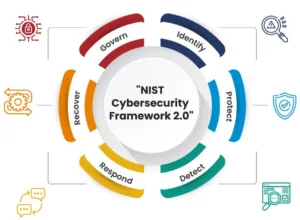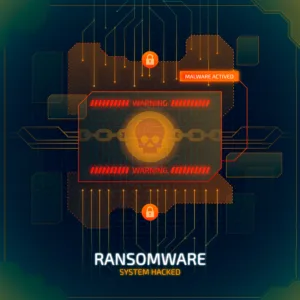
Table of Contents
Introduction
Insider threats refer to security risks that arise from individuals within an organization who have authorized access to sensitive data, systems, or resources, but misuse or abuse their privileges for malicious purposes. These threats can come from employees, contractors, or business partners who possess insider knowledge and exploit it to compromise the confidentiality, integrity, or availability of organizational assets.
Unlike external threats that originate from outside the organization, insider threats stem from individuals who already have access to internal systems and information. They can be intentional, where insiders consciously and deliberately seek to cause harm, or unintentional, where insiders unknowingly compromise security through negligence, lack of awareness, or poor cybersecurity practices.
Insider threats can take various forms, including:
1. Data theft or intellectual property theft:
Insiders may steal sensitive data, trade secrets, or proprietary information with the intention of selling or leaking it to competitors, the media, or other unauthorized parties.
2. Fraud and financial exploitation:
Insiders may engage in fraudulent activities such as embezzlement, bribery, or unauthorized financial transactions for personal gain or to benefit external entities.
3. Sabotage and disruption:
Insiders may intentionally disrupt operations, delete critical data, introduce malware or viruses, or manipulate systems to cause significant damage to the organization’s infrastructure or reputation.
4. Espionage and information leakage:
Insiders with access to sensitive information may engage in espionage on behalf of external entities, leaking confidential data or compromising national security.
5. Unauthorized access and privilege abuse:
Insiders may misuse their authorized access privileges to view, modify, or share information beyond their role requirements, potentially violating privacy regulations and compromising data security. It is crucial for organizations to recognize and address insider threats proactively.
By implementing effective security measures, fostering a culture of security awareness, and maintaining regular monitoring and detection mechanisms, organizations can minimize the risks associated with insider threats and safeguard their critical assets.
Importance of fostering a culture of security
Fostering a culture of security within an organization is of utmost importance in today’s interconnected and digitally driven world. Such a culture ensures that every member of the organization understands their role in protecting sensitive information, systems, and resources from various security threats, including insider threats.
Here are some key reasons highlighting the importance of fostering a culture of security:
1. Mitigating Insider Threats:
A strong security culture helps raise awareness among employees about the risks posed by insider threats. By instilling a sense of responsibility and vigilance, organizations can empower their workforce to identify and report suspicious activities, reducing the likelihood of successful insider attacks.
2. Safeguarding Confidentiality:
A culture of security emphasizes the importance of confidentiality in handling sensitive information. It promotes the understanding that protecting confidential data, trade secrets, and intellectual property is not only a legal and ethical obligation but also crucial for maintaining a competitive edge and preserving customer trust.
3. Preserving Integrity:
Security-conscious organizations prioritize data integrity, ensuring that information remains accurate, unaltered, and reliable. A culture of security instills practices such as access controls, data validation, and secure coding, helping prevent unauthorized modifications or tampering with critical data.
4. Ensuring Availability:
Security is not just about protecting against threats but also about ensuring the availability of resources and systems. A culture of security encourages measures like regular backups, disaster recovery planning, and proactive maintenance, reducing the risk of downtime caused by cyberattacks or other disruptions.
5. Compliance and Regulatory Requirements:
Organizations operating in various industries must comply with specific regulations and data protection standards. A culture of security promotes adherence to these requirements by educating employees about their responsibilities, training them on compliance best practices, and integrating security into everyday workflows.
6. Building Customer Trust:
Security breaches can significantly damage an organization’s reputation and erode customer trust. By fostering a culture of security, organizations demonstrate their commitment to protecting customer data, which in turn enhances trust and fosters long-term relationships with clients and stakeholders.
7. Empowering Employees:
A culture of security empowers employees to be active participants in maintaining a secure environment. By providing security training, awareness programs, and clear policies, organizations equip their workforce with the knowledge and tools to identify and address potential threats, making security everyone’s responsibility.
8. Strengthening Incident Response:
When a security incident occurs, a culture of security ensures that employees understand the appropriate actions to take, including reporting incidents promptly, preserving evidence, and cooperating with incident response teams. This preparedness facilitates swift and effective responses, minimizing the impact of security breaches. Fostering a culture of security requires consistent communication, ongoing training, and leadership commitment.
By promoting a collective mindset of security awareness and accountability, organizations can create a resilient defense against a wide range of threats and establish a strong foundation for their overall cybersecurity posture.
Types of Insider Threats
Insider threats encompass various types, each characterized by distinct motivations and behaviors. Understanding these types is essential for organizations to effectively mitigate the risks associated with insider threats.
Here are the key types of insider threats:
1. Malicious Insiders:
These individuals intentionally and consciously act against the organization’s interests. They may be driven by personal gain, revenge, or ideological reasons. Malicious insiders may engage in activities such as:
a. Data Theft: Deliberately stealing sensitive information, trade secrets, or intellectual property to sell, share, or use for personal gain or to benefit external entities.
b. Fraud and Financial Exploitation: Engaging in fraudulent activities, embezzlement, bribery, or unauthorized financial transactions for personal enrichment or to benefit external parties.
c. Sabotage and Disruption: Intentionally disrupting operations, deleting critical data, introducing malware or viruses, or manipulating systems to cause harm to the organization’s infrastructure or reputation.
d. Espionage and Information Leakage: Collaborating with external entities to leak confidential information, compromise national security, or engage in espionage.
2. Unintentional Insiders:
These insiders unwittingly compromise security due to negligence, lack of awareness, or poor cybersecurity practices. Unintentional insiders may engage in activities such as:
a. Phishing and Social Engineering: Falling victim to phishing attacks, where they unknowingly disclose sensitive information or provide unauthorized access to attackers.
b. Poor Security Practices: Negligently sharing passwords, using weak or easily guessable passwords, leaving devices unattended, or failing to follow security protocols.
c. Misconfigurations: Making unintentional errors when configuring systems or applications, leading to security vulnerabilities that can be exploited by malicious actors.
d. Unintentional Data Disclosure: Accidentally sharing sensitive information through email, file sharing platforms, or other communication channels without proper authorization or encryption.
3. Compromised Insiders:
In this type of insider threat, an insider’s credentials or access privileges are compromised by external actors, effectively turning them into unwitting accomplices. Compromised insiders may unknowingly facilitate unauthorized access or data breaches due to:
a. Credential Theft: Attackers steal an insider’s login credentials through techniques such as phishing, keylogging, or brute-force attacks.
b. Account Hijacking: Hackers gain control of an insider’s account or device, allowing them to access sensitive information or perform malicious activities.
c. Insider Collaborators: External actors manipulate or coerce an insider into providing access or information, exploiting their position and trust within the organization. It is essential for organizations to be aware of these different types of insider threats to tailor their preventive measures, detection mechanisms, and response strategies accordingly. By understanding the motivations and behaviors behind each type, organizations can better protect their assets and mitigate the risks associated with insider threats.
Examples and Real-life Cases of Insider Threats
Examples of insider threats are not limited to specific industries or organizations, and they serve as valuable lessons for understanding the potential risks involved.
Here are some real-life cases that highlight the impact of insider threats:
1. Edward Snowden and NSA Leaks:
Edward Snowden, a former contractor for the National Security Agency (NSA) in the United States, leaked classified documents in 2013, revealing extensive global surveillance programs. Snowden’s actions exposed sensitive information about government surveillance practices, raising significant concerns about privacy and national security.
2. Terry Childs and San Francisco’s Network:
In 2008, Terry Childs, a network administrator for the city of San Francisco, deliberately locked city officials out of the municipal network by changing the passwords and refusing to provide access. Childs claimed that he was protecting the network from potential sabotage, but his actions disrupted city operations and resulted in a significant loss of productivity.
3. Chelsea Manning and WikiLeaks:
Chelsea Manning, a former intelligence analyst in the U.S. Army, leaked classified military and diplomatic documents to WikiLeaks in 2010. Manning’s actions exposed sensitive information about military operations, human rights abuses, and diplomatic communications, causing diplomatic strains and prompting discussions about the balance between transparency and security.
4. Harold James Nicholson and Espionage:
Harold Nicholson, a former CIA officer, turned into a spy for Russia in the 1990s. Nicholson sold classified information, including the identities of CIA agents, to Russian intelligence agencies, compromising U.S. national security. His actions highlighted the risk of insiders with access to sensitive intelligence working against their own organization’s interests.
5. JP Morgan Chase Insider Trading:
In 2015, a former JP Morgan Chase employee, Anthony Panzica, engaged in insider trading, using confidential information to make unauthorized stock trades. Panzica’s actions resulted in significant financial losses and legal consequences for both himself and the organization.
6. SolarWinds Cyberattack:
In 2020, a sophisticated cyberattack targeted SolarWinds, a leading IT management software company. The attack involved the insertion of malicious code into SolarWinds’ software updates, leading to a supply chain compromise. While the attack was not carried out by an insider, it highlighted the potential risks posed by compromised software supply chains, impacting numerous organizations that used SolarWinds’ products.
These examples demonstrate the diverse nature of insider threats, ranging from unauthorized disclosures and sabotage to espionage and financial exploitation. They underscore the importance of implementing robust security measures, including access controls, monitoring systems, and employee training, to detect and prevent insider threats. By studying real-life cases, organizations can gain insights into the motivations, techniques, and consequences of insider threats.
This knowledge helps shape effective security strategies, including incident response plans, employee awareness programs, and continuous monitoring, to minimize the risks associated with insider threats.
The Impact of Insider Threats
Insider threats can have a significant impact on organizations, affecting their financial stability, reputation, and overall security posture. Understanding the potential consequences of insider threats is crucial for organizations to develop proactive measures to mitigate and manage these risks.
Here are key impacts that insider threats can have:
1. Financial Losses:
Insider threats can result in substantial financial losses for organizations. Incidents such as fraud, embezzlement, or unauthorized financial transactions carried out by insiders can deplete company resources, impact profitability, and even lead to bankruptcy in extreme cases. Additionally, the costs associated with investigating and responding to insider threat incidents can be significant.
2. Damage to Reputation and Trust:
Insider threats can severely damage an organization’s reputation and erode the trust of customers, partners, and stakeholders. The unauthorized disclosure of sensitive information, trade secrets, or customer data can lead to loss of business, legal repercussions, and a tarnished brand image. Rebuilding trust and recovering from a damaged reputation can be a challenging and lengthy process.
3. Legal and Regulatory Consequences:
Insider threat incidents may violate laws, regulations, and industry standards, resulting in legal and regulatory consequences. Organizations that fail to protect sensitive data, comply with privacy regulations, or adequately address insider threats can face fines, lawsuits, and other legal actions. These penalties further exacerbate the financial impact and can harm the organization’s standing in the industry.
4. Operational Disruption:
Insider threats have the potential to disrupt normal business operations, leading to downtime, loss of productivity, and service disruptions. Insider actions such as sabotage, system manipulations, or unauthorized data access can result in temporary or prolonged disruptions, impacting the organization’s ability to deliver products or services, meet customer demands, and fulfill contractual obligations.
5. Intellectual Property and Trade Secrets Loss:
Insider threats can result in the theft or exposure of valuable intellectual property, trade secrets, or proprietary information. This can give competitors an unfair advantage, compromise innovation efforts, and harm the organization’s long-term growth and competitiveness. Protecting intellectual property is vital for maintaining a unique market position and sustaining a competitive edge.
6. Damage to Employee Morale and Trust:
Insider threat incidents can create a sense of unease and mistrust among employees. When an insider violates trust and compromises security, it can negatively impact the overall morale and collaboration within the organization. Employees may become more cautious or suspicious, hindering teamwork and productivity. Organizations need to rebuild employee trust through transparent communication, strong security measures, and fostering a culture of security.
7. Increased Security Costs and Measures:
Insider threats often lead to increased security investments, such as implementing stricter access controls, monitoring systems, and security protocols. Organizations may need to allocate additional resources to enhance security awareness training, conduct thorough background checks, and implement advanced technologies for detecting and preventing insider threats. These additional costs can strain the organization’s budget and impact financial planning. The impact of insider threats extends beyond immediate financial losses, affecting an organization’s long-term viability, reputation, and relationships with stakeholders.
By recognizing the potential consequences, organizations can prioritize insider threat prevention, detection, and response strategies to safeguard their assets and mitigate the risks associated with insider threats.
Building a Culture of Security
Building a culture of security is crucial for organizations to establish a strong defense against a wide range of threats, including insider threats. It involves fostering an environment where every individual understands their responsibility to prioritize and uphold security practices.
Here are key steps to building a culture of security:
1. Leadership Commitment:
Building a culture of security starts with leadership commitment. Executives and managers must prioritize security as a core value and set the example for others to follow. They should allocate resources, support security initiatives, and communicate the importance of security throughout the organization.
2. Clear Security Policies and Procedures:
Establishing clear and comprehensive security policies and procedures is essential. These documents outline expectations, guidelines, and best practices for employees to follow. Policies should cover areas such as data protection, access controls, password management, incident reporting, and acceptable use of technology.
3. Employee Training and Awareness:
Providing regular security training and awareness programs is crucial for building a culture of security. Employees should receive education on topics such as identifying phishing attacks, using strong passwords, securing personal devices, and handling sensitive information. Training should be ongoing, reflecting emerging threats and evolving security practices.
4. Role-Based Access Control:
Implementing role-based access control ensures that employees have access privileges aligned with their job responsibilities. Granting access based on the principle of least privilege minimizes the risk of unauthorized access or misuse of sensitive information. Regular access reviews and revocation of unnecessary privileges are vital to maintain a secure environment.
5. Continuous Monitoring and Auditing:
Organizations should implement monitoring systems to detect and prevent security incidents. This includes monitoring network traffic, user activities, and system logs for suspicious behavior or policy violations. Regular audits should be conducted to identify security gaps, ensure compliance, and evaluate the effectiveness of security controls.
6. Incident Response Readiness:
Developing an effective incident response plan prepares the organization to handle security incidents promptly and effectively. The plan should outline roles and responsibilities, communication procedures, containment and mitigation strategies, and recovery steps. Regular drills and testing help validate the plan’s effectiveness and identify areas for improvement.
7. Encouraging Reporting and Accountability:
Creating a culture where employees feel comfortable reporting potential security incidents or concerns is crucial. Establish anonymous reporting channels and emphasize non-retaliation policies. Recognize and reward individuals who actively contribute to the security of the organization. Holding employees accountable for security violations reinforces the importance of following established security protocols.
8. Collaboration and Communication:
Promote collaboration and open communication channels across departments to address security concerns and share best practices. Encourage employees to share their security knowledge and experiences. Foster a sense of collective responsibility, emphasizing that security is everyone’s job.
9. Regular Security Assessments:
Conducting regular security assessments, including vulnerability assessments and penetration testing, helps identify weaknesses and proactively address security risks. Stay informed about the latest threats and security technologies to adapt and strengthen security measures accordingly.
10. Continuous Improvement and Adaptation:
Building a culture of security is an ongoing process. Regularly evaluate the effectiveness of security measures, learn from security incidents and near-misses, and adapt security practices accordingly. Encourage feedback from employees and incorporate their insights into security initiatives. By following these steps, organizations can foster a culture of security that permeates throughout the entire workforce.
This proactive approach helps mitigate risks, detect and respond to security incidents, and protect valuable assets, ultimately ensuring the organization’s resilience in the face of evolving security threats.
Preventing Insider Threats
Preventing insider threats requires a comprehensive approach that combines technical controls, policy frameworks, and employee awareness. By implementing the following preventive measures, organizations can significantly reduce the risk of insider threats:
1. Strict Access Control:
Implement robust access control mechanisms to ensure that employees have access only to the resources necessary for their roles. Use principles like least privilege, segregation of duties, and strong authentication methods (e.g., two-factor authentication) to limit unauthorized access to sensitive systems, data, and physical areas.
2. Employee Screening and Background Checks:
Conduct thorough background checks during the hiring process, particularly for positions that involve access to sensitive information or critical systems. Verify credentials, employment history, and references to gain insights into an individual’s trustworthiness and potential risks.
3. Security Training and Awareness:
Educate employees about the risks and consequences of insider threats through regular security training and awareness programs. Teach them to recognize common attack vectors like phishing, social engineering, and suspicious behavior. Promote good security practices, such as strong password management, secure remote working, and safe data handling.
4. Encourage Reporting and Whistleblowing:
Create a culture where employees feel comfortable reporting suspicious activities or concerns without fear of retaliation. Establish anonymous reporting channels and clearly communicate the non-retaliation policy. Encourage employees to be vigilant and report any potential security incidents they come across.
5. Monitoring and Auditing:
Implement monitoring systems and conduct regular audits to detect anomalies, policy violations, and potential insider threats. Monitor user activities, network traffic, and access logs to identify unusual behavior, unauthorized access attempts, or data exfiltration. Regularly review access privileges and conduct audits to ensure compliance and detect any irregularities.
6. Data Loss Prevention (DLP) Measures:
Deploy data loss prevention solutions that monitor and control the movement of sensitive data within and outside the organization. Implement controls to prevent unauthorized copying, printing, or emailing of sensitive information. Use encryption and data classification to protect sensitive data at rest and in transit.
7. Insider Threat Detection Tools:
Employ specialized insider threat detection tools that leverage behavioral analytics and machine learning algorithms to identify unusual patterns, deviations from normal behavior, or high-risk activities. These tools can help detect insider threats in real-time or provide alerts for further investigation.
8. Strong Exit Procedures:
Establish proper procedures for offboarding employees, including revoking access privileges, collecting company-owned devices, and disabling accounts promptly. Conduct exit interviews to understand any potential grievances or concerns that might lead to disgruntled behavior.
9. Secure Data Handling and Encryption:
Enforce secure data handling practices, such as proper data classification, encryption, and secure file transfer mechanisms. Implement encryption for sensitive data stored on laptops, removable media, and cloud platforms to protect against unauthorized access in case of theft or loss.
10. Regular Security Assessments:
Conduct periodic security assessments to identify vulnerabilities, assess the effectiveness of existing controls, and address any gaps in security. Perform penetration testing and vulnerability assessments to identify weaknesses in systems, applications, and processes that could be exploited by insiders.
By combining these preventive measures, organizations can significantly reduce the likelihood and impact of insider threats. It’s important to maintain a proactive stance, continuously adapt security measures, and foster a culture of security awareness to effectively mitigate the risks associated with insider threats.
Encouraging Reporting and Whistleblowing
Encouraging reporting and whistleblowing is a vital aspect of insider threat prevention and detection. By creating a safe and supportive environment for employees to report suspicious activities, organizations can uncover potential insider threats and take prompt action to mitigate risks.
Here are key steps to encourage reporting and whistleblowing:
1. Establish Confidential Reporting Channels:
Provide employees with anonymous and confidential reporting channels to report suspicions, concerns, or incidents related to insider threats. Offer multiple reporting options such as hotlines, online reporting portals, or designated individuals who can receive reports in person. Emphasize that the identity of the reporter will be protected to encourage participation.
2. Communicate Non-Retaliation Policy:
Clearly communicate and enforce a non-retaliation policy that protects employees who report potential insider threats. Assure employees that they will not face negative consequences or retaliation for reporting in good faith. Reiterate this policy regularly through various communication channels to ensure it is widely understood and trusted.
3. Educate Employees on Reporting Procedures:
Conduct regular training sessions and awareness campaigns to educate employees on the reporting procedures. Provide clear instructions on how to report concerns, what information to include, and the importance of reporting promptly. Highlight the potential impact of insider threats and the role that employees play in maintaining a secure environment.
4. Promote a Culture of Trust and Support:
Foster a culture that values trust, transparency, and support. Encourage open communication, active listening, and empathy within the organization. Create forums or channels where employees can openly discuss security concerns or seek guidance. Celebrate and recognize individuals who proactively report potential threats, emphasizing their contribution to the organization’s security.
5. Swift Response and Investigation:
Establish a well-defined process for handling reported incidents and ensure that appropriate actions are taken promptly. Assign a dedicated team or individual responsible for reviewing and investigating reported concerns. Communicate the steps taken and outcomes to the reporting employee to demonstrate that their report was taken seriously and addressed.
6. Regular Feedback and Updates:
Provide regular feedback to employees who submit reports, even if the reported concern did not result in a confirmed insider threat. Let employees know that their reports are valued and contribute to overall security awareness. Share updates on security measures implemented as a result of reported incidents, demonstrating that the organization takes proactive steps to address potential threats.
7. Anonymous Reporting Incentives:
Consider offering incentives or rewards programs to encourage anonymous reporting. This can include recognition, small gifts, or other forms of acknowledgment for individuals who provide valuable information leading to the detection or prevention of insider threats. Incentives can further motivate employees to actively participate in reporting potential security risks.
8. Continuous Awareness and Reinforcement:
Maintain a continuous awareness program to reinforce the importance of reporting and whistleblowing. Use various communication channels, such as newsletters, intranet articles, and posters, to remind employees about the reporting mechanisms, the non-retaliation policy, and the organization’s commitment to maintaining a secure environment.
By establishing a supportive reporting culture, organizations can empower employees to be active participants in mitigating insider threats. Encouraging reporting and whistleblowing serves as an additional layer of defense, helping to identify and address potential risks before they escalate. It fosters a sense of collective responsibility and contributes to a more robust security posture.
Responding to Insider Threats
Responding to insider threats requires a swift and coordinated approach to minimize the potential damage and mitigate risks. When an insider threat is detected or suspected, organizations should follow these key steps to effectively respond:
1. Activate the Incident Response Plan:
Immediately initiate the organization’s incident response plan, which should outline the steps to be taken when an insider threat is identified. The plan should include designated roles and responsibilities, communication protocols, and predefined actions to contain and mitigate the threat.
2. Gather Evidence:
Preserve and collect relevant evidence related to the insider threat incident. This includes capturing logs, system snapshots, user activity records, and any other available data that can help identify the extent of the threat, the affected systems or data, and the actions taken by the insider. Documenting the evidence is crucial for future investigations and potential legal proceedings.
3. Secure Affected Systems and Data:
Isolate and secure the affected systems and data to prevent further unauthorized access or damage. This may involve disabling compromised user accounts, changing access credentials, or temporarily restricting access to critical resources. Implement appropriate controls to ensure the integrity and confidentiality of the evidence collected.
4. Notify the Appropriate Parties:
Notify the necessary stakeholders, such as senior management, legal counsel, human resources, and IT security teams. Keep relevant parties informed about the incident, the actions taken, and the potential impact. Adhere to legal and regulatory requirements regarding incident reporting, if applicable.
5. Conduct an Investigation:
Launch a thorough investigation to determine the scope, motives, and impact of the insider threat. Assign a dedicated team with expertise in digital forensics, internal investigations, and legal compliance. Identify potential sources of evidence, interview relevant individuals, and analyze system logs and records to piece together the sequence of events and understand the underlying causes.
6. Collaborate with Law Enforcement:
If the insider threat involves illegal activities or significant damage, involve law enforcement agencies in the investigation. Provide them with the necessary evidence and cooperate fully to facilitate their efforts. Collaboration with law enforcement can enhance the chances of successful prosecution and help deter future insider threats.
7. Implement Mitigation Measures:
Based on the investigation findings, implement appropriate mitigation measures to prevent similar incidents in the future. This may involve revising access controls, enhancing security measures, updating policies and procedures, or implementing new technologies to detect and prevent insider threats. Continuously monitor and review the effectiveness of these measures.
8. Communicate Internally and Externally:
Keep employees and stakeholders informed about the insider threat incident, while adhering to legal and privacy considerations. Communicate the steps taken to address the threat, reassure affected parties, and emphasize the organization’s commitment to security. Consider providing security awareness training and reminders to employees to prevent future incidents.
9. Learn and Improve:
Conduct a post-incident review to identify lessons learned and areas for improvement. Assess the effectiveness of the incident response plan, detection mechanisms, employee training, and security controls. Update policies, procedures, and preventive measures based on the insights gained from the incident response process.
10. Provide Support and Recovery:
Offer support to affected individuals, such as employees or customers whose data may have been compromised. Provide guidance on steps to mitigate any potential negative consequences resulting from the incident, such as identity theft protection services or credit monitoring. Take measures to restore affected systems, data, and services to minimize disruption.
By promptly responding to insider threats with a well-defined incident response plan and following these steps, organizations can mitigate the impact, minimize future risks, and protect their assets and reputation. Collaboration among internal teams, law enforcement, and affected stakeholders is crucial to effectively respond to insider threats and ensure a secure and resilient environment.
Conclusion
Fostering a culture of security is essential to mitigate insider threats effectively. By promoting a security-conscious environment, organizations can empower their employees to actively contribute to the prevention and detection of insider threats.
Here are key points to encourage and foster a culture of security:
1. Leadership Commitment:
Leaders must demonstrate their commitment to security by setting the tone from the top. Executives and managers should prioritize security as a core value and lead by example. When leaders actively engage in security practices and communicate its importance, employees are more likely to follow suit.
2. Employee Education and Awareness:
Provide comprehensive security education and awareness programs to employees at all levels. Offer regular training sessions and resources that cover various security topics, including the risks associated with insider threats, recognizing suspicious activities, and best practices for protecting sensitive information. Make security awareness an ongoing effort to keep employees informed about evolving threats.
3. Clear Security Policies and Procedures:
Establish clear and concise security policies and procedures that outline expectations, responsibilities, and consequences for non-compliance. Ensure that employees have easy access to these documents and regularly review and update them as needed. Make sure policies are communicated effectively and in a manner that is easily understood by all employees.
4. Employee Engagement and Empowerment:
Engage employees in the security process by encouraging them to take ownership of security and report any concerns or potential threats they observe. Foster a culture where employees feel comfortable raising security-related issues without fear of retribution. Provide channels for anonymous reporting and ensure that employees are aware of these options.
5. Recognition and Rewards:
Recognize and reward employees who actively contribute to the organization’s security by adhering to best practices, reporting potential threats, or suggesting security enhancements. Publicly acknowledge their efforts to create a positive reinforcement cycle and reinforce the value of security within the organization.
6. Collaboration and Communication:
Encourage collaboration and open communication among employees regarding security matters. Facilitate the sharing of security-related information, experiences, and lessons learned. Establish forums or channels where employees can discuss security concerns, ask questions, and seek guidance. Encourage cross-functional collaboration to ensure a holistic approach to security.
7. Regular Security Assessments:
Conduct regular security assessments, such as vulnerability assessments and penetration testing, to identify potential weaknesses and gaps in security. Share the findings with employees, highlighting the importance of ongoing vigilance and continuous improvement. Use assessments as an opportunity to reinforce the significance of security and the need for collective effort.
8. Leading by Example:
Leaders and managers should consistently model secure behaviors and practices. By adhering to security policies, practicing good password hygiene, and demonstrating secure communication and data handling, they set the standard for others to follow. This behavior reinforces the culture of security throughout the organization.
9. Continuous Improvement:
Foster a mindset of continuous improvement when it comes to security. Regularly evaluate security practices, technologies, and policies to ensure they align with evolving threats and industry best practices. Encourage employees to provide feedback and suggestions for enhancing security measures.
10. Celebrate Success:
Celebrate and communicate successes related to security within the organization. Share stories of how security measures and employee vigilance have protected the organization from potential threats. Highlight the positive impact of a strong security culture on the organization’s resilience and reputation.
By emphasizing the importance of security, providing education and resources, and empowering employees to actively contribute, organizations can foster a culture of security that mitigates the risks associated with insider threats. A collective commitment to security helps create a stronger defense against potential insider threats and cultivates a resilient and secure work environment.
Do follow on “https://cybertechworld.co.in” for more such insightful cybersecurity content.



















